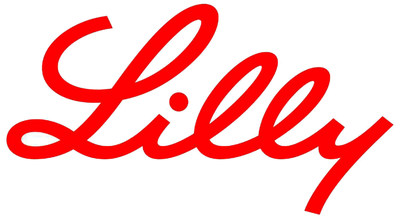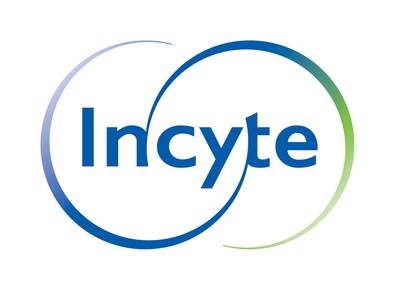Eli Lilly and Company (NYSE: LLY) and Incyte (NASDAQ:INCY) announced today that the U.S. Food and Drug Administration (FDA) has extended the review period for the supplemental New Drug Application (sNDA) for baricitinib for the treatment of adults with moderate to severe atopic dermatitis (AD).
|
INDIANAPOLIS, April 6, 2021 /PRNewswire/ -- Eli Lilly and Company (NYSE: LLY) and Incyte (NASDAQ:INCY) announced today that the U.S. Food and Drug Administration (FDA) has extended the review period for the supplemental New Drug Application (sNDA) for baricitinib for the treatment of adults with moderate to severe atopic dermatitis (AD). The FDA extended the action date to allow time to review additional data analyses submitted by Lilly in response to recent information requests from the FDA. The Prescription Drug User Fee Act (PDUFA) action date has been extended three months to early Q3 2021. “We look forward to continuing to work closely with the FDA to bring baricitinib to patients living with moderate to severe atopic dermatitis,” said Ilya Yuffa, senior vice president and president of Lilly Bio-Medicines. “We remain confident in baricitinib and believe it has the potential to be an effective new treatment option for these patients.” This extension does not affect Lilly’s previously-issued financial guidance for 2021. Ongoing research for baricitinib, an oral JAK inhibitor discovered by Incyte and licensed to Lilly, in adult and pediatric AD, alopecia areata (AA), systemic lupus erythematosus (SLE), juvenile idiopathic arthritis (JIA), COVID-19 and for its approved indication for rheumatoid arthritis (RA) continues. About OLUMIANT® (baricitinib) In December 2009, Lilly and Incyte announced an exclusive worldwide license and collaboration agreement for the development and commercialization of baricitinib and certain follow-on compounds for patients with inflammatory and autoimmune diseases. Indication and Usage for OLUMIANT (baricitinib) tablets (in the United States) for RA patients OLUMIANT® (baricitinib) 2-mg is indicated for the treatment of adult patients with moderately to severely active rheumatoid arthritis who have had an inadequate response to one or more tumor necrosis factor (TNF) antagonist therapies. Limitation of Use: Use of OLUMIANT in combination with other JAK inhibitors, biologic disease-modifying antirheumatic drugs (DMARDs), or with potent immunosuppressants such as azathioprine and cyclosporine is not recommended. IMPORTANT SAFETY INFORMATION FOR OLUMIANT (baricitinib) tablets WARNING: SERIOUS INFECTIONS, MALIGNANCY, AND THROMBOSIS SERIOUS INFECTIONS: Patients treated with Olumiant are at risk for developing serious infections that may lead to hospitalization or death. Most patients who developed these infections were taking concomitant immunosuppressants such as methotrexate or corticosteroids. If a serious infection develops, interrupt Olumiant until the infection is controlled. Reported infections include:
Carefully consider the risks and benefits of Olumiant prior to initiating therapy in patients with chronic or recurrent infection. Closely monitor patients for the development of signs and symptoms of infection during and after treatment with Olumiant including the possible development of TB in patients who tested negative for latent TB infection prior to initiating therapy. MALIGNANCIES: Lymphoma and other malignancies have been observed in patients treated with Olumiant. THROMBOSIS: Thrombosis, including deep venous thrombosis (DVT) and pulmonary embolism (PE), has been observed at an increased incidence in patients treated with Olumiant compared to placebo. In addition, there were cases of arterial thrombosis. Many of these adverse events were serious and some resulted in death. Patients with symptoms of thrombosis should be promptly evaluated. WARNINGS AND PRECAUTIONS SERIOUS INFECTIONS: The most common serious infections reported with Olumiant included pneumonia, herpes zoster, and urinary tract infection. Among opportunistic infections, tuberculosis, multidermatomal herpes zoster, esophageal candidiasis, pneumocystosis, acute histoplasmosis, cryptococcosis, cytomegalovirus, and BK virus were reported with Olumiant. Some patients have presented with disseminated rather than localized disease, and were often taking concomitant immunosuppressants such as methotrexate or corticosteroids. Avoid Olumiant in patients with an active, serious infection, including localized infections. Consider the risks and benefits of treatment prior to initiating Olumiant in patients:
Closely monitor patients for infections during and after Olumiant treatment. Interrupt Olumiant if a patient develops a serious infection, an opportunistic infection, or sepsis. Do not resume Olumiant until the infection is controlled. Tuberculosis – Before initiating Olumiant, evaluate and test patients for latent or active infection and treat patients with latent TB with standard antimycobacterial therapy. Olumiant should not be given to patients with active TB. Consider anti-TB therapy prior to initiating Olumiant in patients with a history of latent or active TB in whom an adequate course of treatment cannot be confirmed, and for patients with a negative test for latent TB but who have risk factors for TB infection. Monitor patients for TB during Olumiant treatment. Viral Reactivation – Viral reactivation, including cases of herpes virus reactivation (e.g., herpes zoster), were reported in clinical studies with Olumiant. If a patient develops herpes zoster, interrupt Olumiant treatment until the episode resolves. The impact of Olumiant on chronic viral hepatitis reactivation is unknown. Screen for viral hepatitis in accordance with clinical guidelines before initiating Olumiant. MALIGNANCY AND LYMPHOPROLIFERATIVE DISORDERS: Malignancies were observed in Olumiant clinical studies. Consider the risks and benefits of Olumiant prior to initiating therapy in patients with a known malignancy other than a successfully treated non-melanoma skin cancer (NMSC) or when considering continuing Olumiant in patients who develop a malignancy. NMSCs were reported in patients treated with Olumiant. Periodic skin examination is recommended for patients who are at increased risk for skin cancer. THROMBOSIS: Thrombosis, including DVT and PE, has been observed at an increased incidence in Olumiant-treated patients compared to placebo. In addition, arterial thrombosis events in the extremities have been reported in clinical studies with Olumiant. Many of these adverse events were serious and some resulted in death. There was no clear relationship between platelet count elevations and thrombotic events. Use Olumiant with caution in patients who may be at increased risk of thrombosis. If clinical features of DVT/PE or arterial thrombosis occur, evaluate patients promptly and treat appropriately. GASTROINTESTINAL PERFORATIONS: Gastrointestinal perforations have been reported in Olumiant clinical studies, although the role of JAK inhibition in these events is not known. Use Olumiant with caution in patients who may be at increased risk for gastrointestinal perforation (e.g., patients with a history of diverticulitis). Promptly evaluate patients who present with new onset abdominal symptoms for early identification of gastrointestinal perforation. LABORATORY ABNORMALITIES: Neutropenia – Olumiant treatment was associated with an increased incidence of neutropenia (absolute neutrophil count [ANC] <1000 cells/mm3) compared to placebo. Avoid initiation or interrupt Olumiant treatment in patients with an ANC <1000 cells/mm3. Evaluate at baseline and thereafter according to routine patient management. Lymphopenia – Absolute lymphocyte count (ALC) <500 cells/mm3 were reported in Olumiant clinical trials. Lymphocyte counts less than the lower limit of normal were associated with infection in patients treated with Olumiant, but not placebo. Avoid initiation or interrupt Olumiant treatment in patients with an ALC <500 cells/mm3. Evaluate at baseline and thereafter according to routine patient management. Anemia – Decreases in hemoglobin levels to <8 g/dL were reported in Olumiant clinical trials. Avoid initiation or interrupt Olumiant treatment in patients with hemoglobin <8 g/dL. Evaluate at baseline and thereafter according to routine patient management. Liver Enzyme Elevations – Olumiant treatment was associated with increased incidence of liver enzyme elevation compared to placebo. Increases of ALT ≥5x upper limit of normal (ULN) and increases of AST ≥10x ULN were observed in patients in Olumiant clinical trials. Evaluate at baseline and thereafter according to routine patient management. Promptly investigate the cause of liver enzyme elevation to identify potential cases of drug-induced liver injury. If increases in ALT or AST are observed and drug-induced liver injury is suspected, interrupt Olumiant until this diagnosis is excluded. Lipid Elevations – Treatment with Olumiant was associated with increases in lipid parameters, including total cholesterol, low-density lipoprotein cholesterol, and high-density lipoprotein cholesterol. Assess lipid parameters approximately 12 weeks following Olumiant initiation. Manage patients according to clinical guidelines for the management of hyperlipidemia. VACCINATIONS: Avoid use of live vaccines with Olumiant. Update immunizations in agreement with current immunization guidelines prior to initiating Olumiant therapy. HYPERSENSITIVITY: Reactions such as angioedema, urticaria, and rash that may reflect drug sensitivity have been observed in patients receiving Olumiant, including serious reactions. If a serious hypersensitivity reaction occurs, promptly discontinue Olumiant while evaluating the potential causes of the reaction. ADVERSE REACTIONS USE IN SPECIFIC POPULATIONS PREGNANCY AND LACTATION: No information is available to support the use of Olumiant in pregnancy or lactation. Advise women not to breastfeed during treatment with Olumiant. HEPATIC AND RENAL IMPAIRMENT: Olumiant is not recommended in patients with severe hepatic impairment or in patients with severe renal impairment. Please click to access full Prescribing Information, including Boxed Warning about Serious infections, Malignancies, and Thrombosis, and Medication Guide. BA HCP ISI 09JUL2020 About Lilly in Dermatology About Eli Lilly and Company About Incyte OLUMIANT® is a registered trademark owned or licensed by Eli Lilly and Company, its subsidiaries, or affiliates. Lilly Cautionary Statement Regarding Forward-Looking Statements Refer to:
SOURCE Eli Lilly & Company; Incyte | ||
Company Codes: NYSE:LLY, NASDAQ-NMS:INCY |






